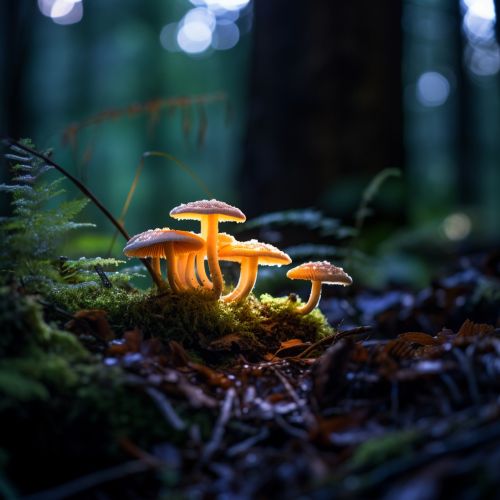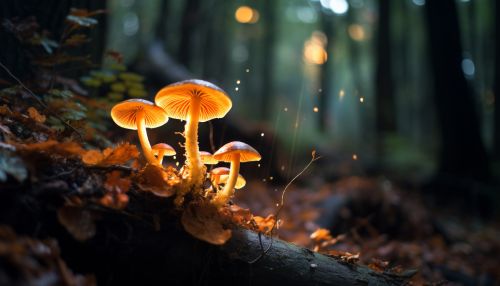Foxfire
Overview
Foxfire, also known as fairy fire, is a term used to describe the bioluminescent characteristic of certain fungi present in decaying wood. The term is derived from the Old French word "fou", meaning "fire", and the English word "fox". The phenomenon is most commonly observed in the species of fungi known as Armillaria mellea or honey fungus, which is known to glow in the dark.


History
The phenomenon of foxfire has been known and recorded for centuries. The earliest known written account dates back to 382 B.C., by the ancient Greek philosopher Aristotle in his work "Historia Animalium". Aristotle referred to the light emitted by certain types of decaying wood as "cold fire" or "pontine fire".
Bioluminescence
Bioluminescence is a process that allows living organisms to produce and emit light. This phenomenon occurs in various organisms, including some bacteria, insects like fireflies, marine animals such as jellyfish, and certain species of fungi. The light is produced as a result of a chemical reaction in which energy is released in the form of light. In fungi, the bioluminescent effect, or foxfire, is typically a blue-green light and is often associated with decaying wood.
Foxfire Fungi
The primary species of fungi that produce foxfire are Armillaria mellea (honey fungus), Omphalotus olearius (jack-o'-lantern mushroom), and Panellus stipticus (bitter oyster). These fungi are saprophytic, meaning they feed on dead or decaying organic matter, primarily wood. The bioluminescent properties of these fungi are believed to be a byproduct of their metabolic processes.
Armillaria mellea
Armillaria mellea, commonly known as honey fungus, is a species of fungus that is known for its bioluminescent properties. It is a parasitic fungus that feeds on the roots of trees and other woody plants, causing a disease known as root rot. The mycelium, or the vegetative part of the fungus, glows in the dark, creating the phenomenon known as foxfire.
Omphalotus olearius
Omphalotus olearius, also known as the jack-o'-lantern mushroom, is another species of fungus that exhibits bioluminescence. Unlike Armillaria mellea, the bioluminescent properties of Omphalotus olearius are visible in the fruiting body of the fungus, rather than the mycelium. The jack-o'-lantern mushroom is poisonous, and its bright orange color and bioluminescent properties serve as a warning to potential predators.
Panellus stipticus
Panellus stipticus, or the bitter oyster, is a species of fungus that is known for its bioluminescent properties. The fruiting bodies of this fungus emit a soft, greenish glow in the dark. Panellus stipticus is found primarily in North America, Europe, and Asia, and is often found growing on decaying wood.
Cultural Significance
Foxfire has held a place in folklore and cultural stories for centuries. In many cultures, the glow of foxfire was associated with supernatural beings or events. In some folklore, foxfire is associated with will-o'-the-wisps, ghostly lights seen in marshes and bogs. In others, it is associated with fairies or spirits. The phenomenon has also been used in literature to create a sense of mystery or magic.
